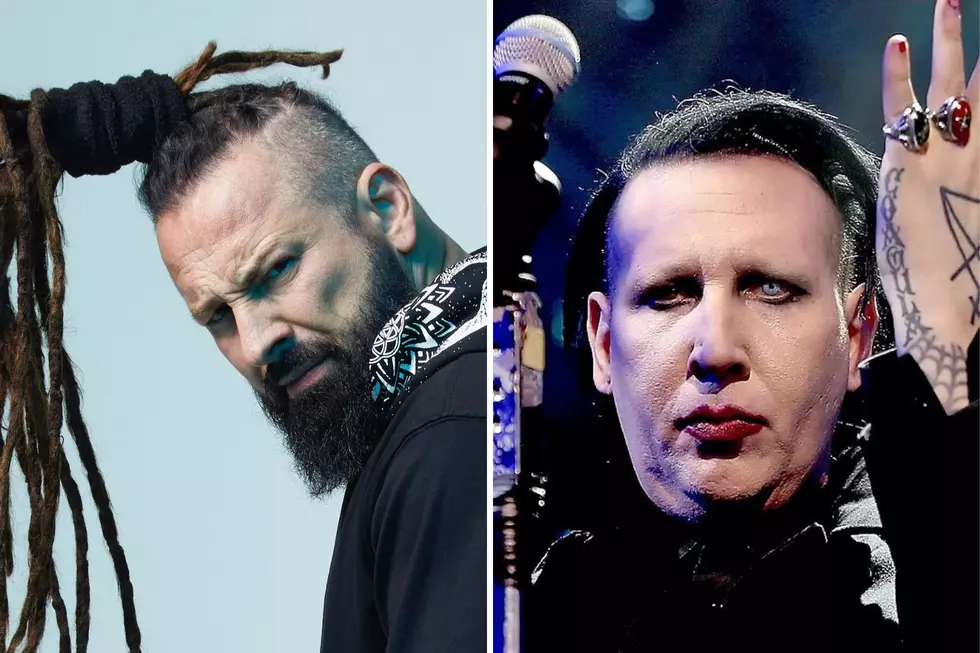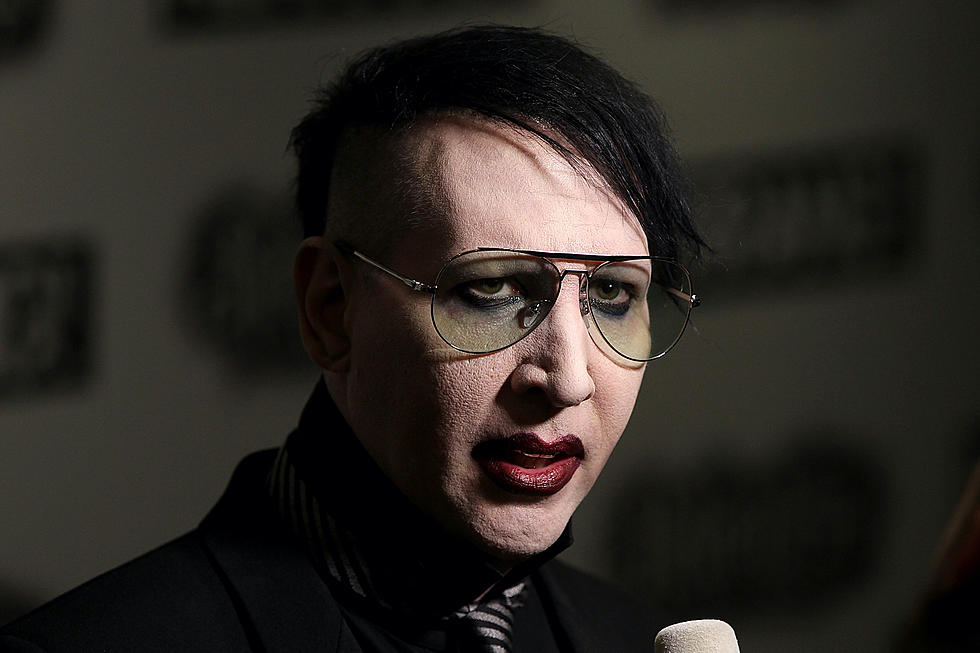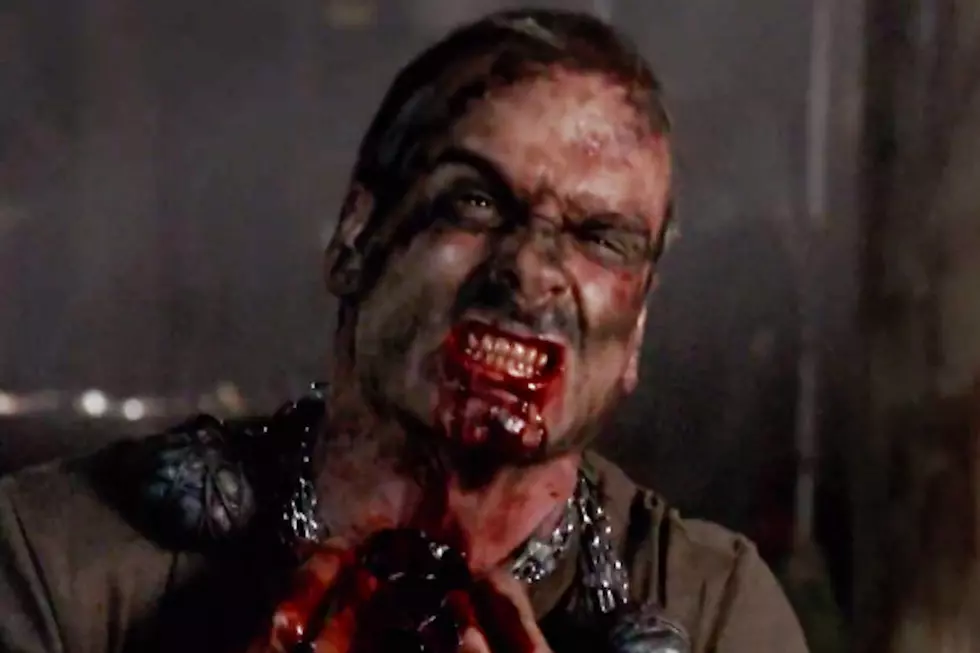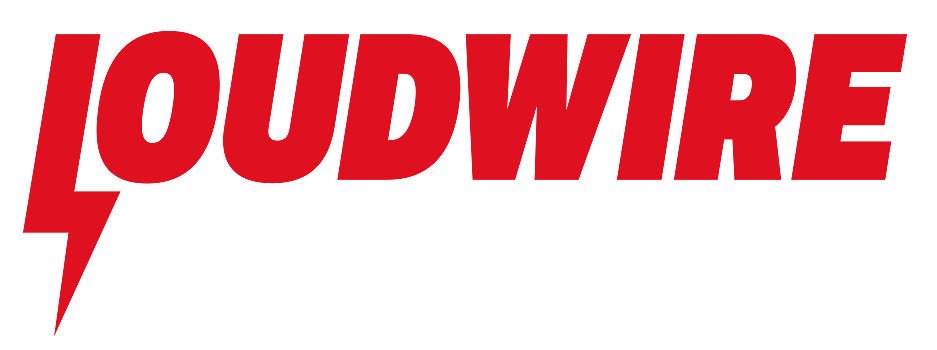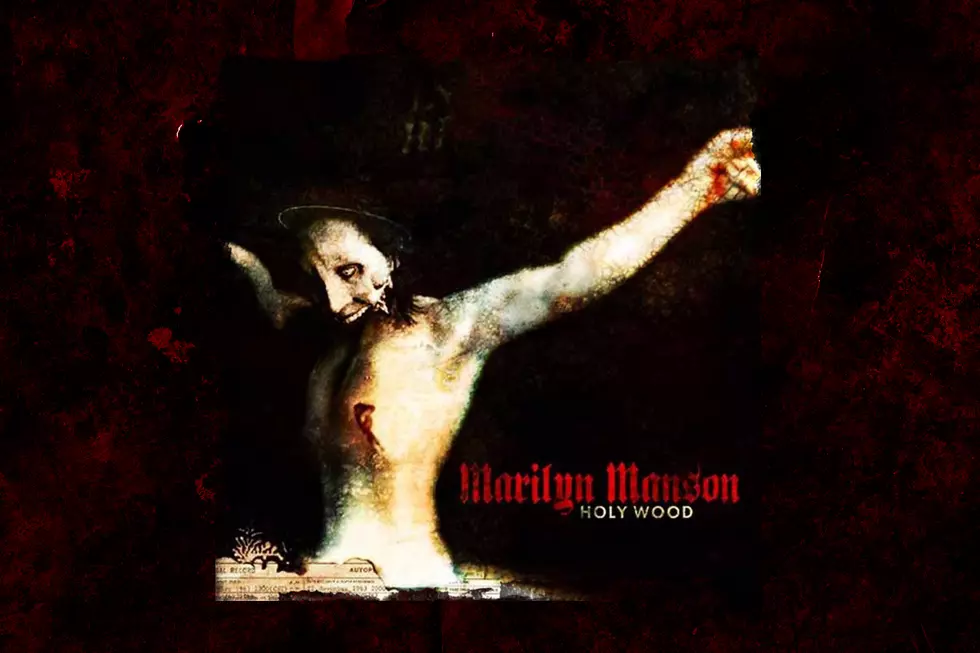
20 Years Ago: Marilyn Manson Emerges From the Eye of the Storm With ‘Holy Wood’ Album
The year was 2000 and there was perhaps no more controversial figure in the music world than Marilyn Manson. The shock rocker had reached new heights on his previous two albums, but with fame came more scrutiny and the spotlight only intensified for Manson in 1999 when two high school youths opened fire on Columbine High School. Looking for a scapegoat, many fingers were pointed at Manson as the boys were alleged to be fans of the the singer and his band. In the weeks following the incident, there was increasing focus by the media not only on Manson, but on the entertainment industry in general by religious and political figures looking for somewhere to place blame.
Through it all, Manson chose not to jump into the media frenzy. On tour at the time, he bowed out of dates out of respect for the victims, penned an Op-Ed piece in Rolling Stone about the accusations levied against him, then kept a low profile as his band began to work on new music. But by no means was he done speaking his mind.
"There was a bit of trepidation [in] deciding, 'Is it worth it? Are people understanding what I'm trying to say? Am I even gonna be allowed to say it?,' pondered Manson to Alternative Press about how to approach the incident in his music. "I definitely had every single door shut in my face ... there were not a lot of people who stood behind me." But rather than take what was being spoonfed via the media, Manson saw the album as his chance to launch a counterattack.
The rocker began writing the disc at his Hollywood Hills home before meeting up with the band to record at locations in Death Valley and the Laurel Canyon area of Los Angeles. But while Manson definitely left his mark on the disc, so did his bandmates. Viewed as more of a collaborative effort, Twiggy Ramirez and John 5 were key to a majority of the musical input, while keyboardist Madonna Wayne Gacy offered input on "President Dead" and "Cruci-Fiction in Space" and Ginger Fish offered more with his drum work.
Reflecting on the writing, Manson said his sessions with John 5 were very focused, with most of the songs essentially complete before being brought to the rest of the band. However, it was a looser relationship working with Twiggy Ramirez as the pair experimented with absinthe during their sessions. In all, the band wrote 100 music fragments, with about 30 becoming songs and 19 being chosen for the new album.
Though inspired by the events of the day, Manson was intent on keeping with his idea of an album trilogy. The disc that would be known as Holy Wood was viewed as the opening piece, with the albums Antichrist Superstar and Mechanical Animals serving as sequels even though they were released prior. And while much of the disc was penned in modern day, some of the ideals dated back to 1995 before the Antichrist Superstar album was released. In addition, Manson had grander plans for Holy Wood, initially planning to create a film around it before deciding to pen two books for it instead.
As for inspiration, Manson found some in Jewish mystic Adam Kadmon. "As you look for your own answers, you'll find Mercury, the number 15, Adam and even something as obscure as Fibonacci," stated Manson to MTV at the time. "All have relevance as Holy Wood unfolds before you. This is something I've been picking at for ten years. I hope it inspired you onto your own transformation." Kadmon was viewed as a primal man within the Manson construct, idealistic and naive as he attempts to stage a revolution through music.
Other pieces of inspiration came from the assassination of President John F. Kennedy, the Bible and Manson's involvement with the spiritual group known as Ordo Templi Orientis. "This is a soundtrack for a world that is being sold to kids and then being destroyed by them. But maybe that's exactly what it deserves," said the vocalist. Sex, guns and the cultures of death and fame all factor into the story, as well.
Speaking on the O'Reilly Factor about the role that media played in Columbine, Manson stated, "If you die and enough people are watching you become a martyr, you become a hero, you become well known. So when you have these things like Columbine, and you have these kids who are angry and they have something to say and no one's listening, the media sends a message that says if you do something loud enough and it gets our attention then you will be famous for it. Those kids ended up on the cover of Time magazine, the media gave them exactly what they wanted. That's why I never did any interviews around that time when I was being blamed for it because I didn't want to contribute to something that I found to be reprehensible."
And yes, being a product of Tinsel Town also played a bit into the disc. Manson told High Times, "There's a real darkness to this town. I definitely had a chip on my shoulder while making this record. In one way, it's defending Hollywood, and in another it's attacking it for not being brave enough. I live in the house the Stones used when they made Let It Bleed. It's the house in the beginning of [the movie] Cocksucker Blues. That was an important inspiration. The end of the '60s became something I was really obsessed with on this album. I think it was because of the Stones being blamed for Altamont, and the Manson murders were a lot like Columbine."
On Nov. 14, 2000, Marilyn Manson's Holy Wood album, subtitled In the Shadow of the Valley of Death, arrived in stores. Whereas the band's prior album had dipped into a glam vibe, Holy Wood was more industrial in sound. It featured three singles. The first of which, "Disposable Teens," arrived a week ahead of the album's street date. The song addresses youths who tend to act out against parental authority, with Manson throwing in nods to The Beatles' "Revolution" and George Orwell's classic book 1984 for good measure. With music from John 5 and Twiggy Ramirez with lyrics penned by Manson, it was a perfect fit in the Manson canon of songs. The track would be the biggest song off the album, charting on both the Mainstream and Modern Rock charts.
Manson would follow with "The Fight Song" in February 2001. The hard-driving song found Manson on the attack, pointing out America's glorification of violence among youth as he belted out "Fight! Fight! Fight!" in the chorus. Though not a huge radio song, the track would become a live favorite.
The third single would be "The Nobodies," arriving in the fall of 2001. Perhaps as much as any song on Holy Wood, the track addressed the Columbine shooters. Manson recalled of the song's video, "I already had a story for the video that I wanted to do, a sort of Marilyn Manson fairy tale about some children escaping from an orphanage and seeking refuge with me after fleeing from some terrible, evil nuns who abused them—as all nuns do, I guess. So I decided that they would be watching Jackass on television and the nuns would be upset with them, which is why they'd leave. But now I don't know what they'll be watching [...] Maybe Joseph Lieberman—That might be the most appropriate thing."
Though part of a trilogy, it turned out to be the least commercially successful. Holy Wood peaked out at No. 13 on the Billboard 200 Album Chart. It was certified gold by the RIAA. And perhaps part of the reason for the drop off was due in part to the controversy surrounding Manson at the time. But having some separation from the disc, Holy Wood stands out as an overlooked gem and a crucial piece to Manson's first chapter of his career. It would be Manson's last album with frequent contributor Twiggy Ramirez, as the guitarist would exit before their next release (though he'd return later in Manson's career). But as a moment in time, Holy Wood stands as powerful artistic statement by an artist under fire.
Marilyn Manson Albums Ranked
More From Loudwire
